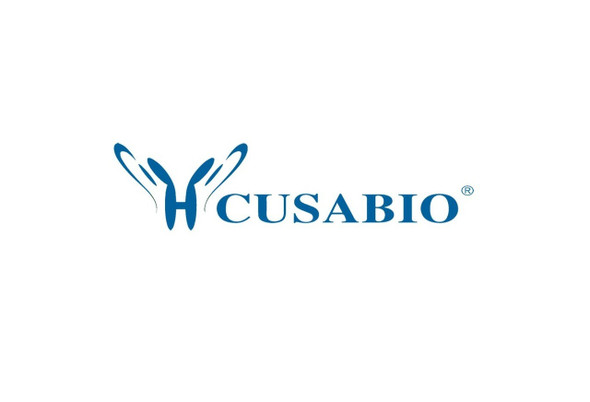Cusabio Virus & Bacteria Recombinants
Recombinant Canine distemper virus Fusion glycoprotein F0 (F), partial | CSB-EP318261CCQ
- SKU:
- CSB-EP318261CCQ
- Availability:
- 3 - 7 Working Days
Description
Recombinant Canine distemper virus Fusion glycoprotein F0 (F), partial | CSB-EP318261CCQ | Cusabio
Alternative Name(s): F; Fusion glycoprotein F0 [Cleaved into: Fusion glycoprotein F2; Fusion glycoprotein F1]
Gene Names: F
Research Areas: Others
Organism: Canine distemper virus (strain Onderstepoort) (CDV)
AA Sequence: QIHWDNLSTIGIIGTDNVHYKIMTRPSHQYLVIKLIPNASLIENCTKAELGEYEKLLNSVLEPINQALTLMTKNVKPLQSLGSGRRQRRFAGVVLAGVALGVATAAQITAGIALHQSNLNAQAIQSLRTSLEQSNKAIEEIREATQETVIAVQGVQDYVNNELVPAMQHMSCELVGQRLGLRLLRYYTELLSIFGPSLRDPISAEISIQALIYALGGEIHKILEKLGYSGSDMIAILESRGIKTKITHVDLPGKFIILSISYPTLSEVKGVIVHRLEAVSYNIGSQEWYTTVPRYIATNGYLISNFDESSCVFVSESAICSQNSLYPMSPLLQQCIRGDTSSCARTLVSGTMGNKFILSKGNIVANCASILCKCYSTSTIINQSPDKLLTFIASDTCPLVEIDGATIQVGGRQYPDMVYEGKVALGPAISLDRLDVGTNLGNALKKLDDAKVLIDSSNQILETVRRSSFNFGS
Source: E.coli
Tag Info: N-terminal 6xHis-SUMO-tagged
Expression Region: 136-608aa
Sequence Info: Partial
MW: 67.5 kDa
Purity: Greater than 90% as determined by SDS-PAGE.
Relevance: Class I viral fusion protein. Under the current model, the protein has at least 3 conformational states: pre-fusion native state, pre-hairpin intermediate state, and post-fusion hairpin state. During viral and plasma cell mbrane fusion, the heptad repeat (HR) regions assume a trimer-of-hairpins structure, positioning the fusion peptide in close proximity to the C-terminal region of the ectodomain. The formation of this structure appears to drive apposition and subsequent fusion of viral and plasma cell mbranes. Directs fusion of viral and cellular mbranes leading to delivery of the nucleocapsid into the cytoplasm. This fusion is pH independent and occurs directly at the outer cell mbrane. The trimer of F1-F2 (F protein) probably interacts with H at the virion surface. Upon HN binding to its cellular receptor, the hydrophobic fusion peptide is unmasked and interacts with the cellular mbrane, inducing the fusion between cell and virion mbranes. Later in infection, F proteins expressed at the plasma mbrane of infected cells could mediate fusion with adjacent cells to form syncytia, a cytopathic effect that could lead to tissue necrosis .
Reference: Amino-terminal precursor sequence modulates canine distemper virus fusion protein function.von Messling V., Cattaneo R.J. Virol. 76:4172-4180(2002)
Storage: The shelf life is related to many factors, storage state, buffer ingredients, storage temperature and the stability of the protein itself. Generally, the shelf life of liquid form is 6 months at -20?/-80?. The shelf life of lyophilized form is 12 months at -20?/-80?.
Notes: Repeated freezing and thawing is not recommended. Store working aliquots at 4? for up to one week.
Function: Class I viral fusion protein. Under the current model, the protein has at least 3 conformational states
Involvement in disease:
Subcellular Location: Virion membrane, Single-pass type I membrane protein, Host cell membrane, Single-pass membrane protein
Protein Families: Paramyxoviruses fusion glycoprotein family
Tissue Specificity:
Paythway:
Form: Liquid or Lyophilized powder
Buffer: If the delivery form is liquid, the default storage buffer is Tris/PBS-based buffer, 5%-50% glycerol. If the delivery form is lyophilized powder, the buffer before lyophilization is Tris/PBS-based buffer, 6% Trehalose, pH 8.0.
Reconstitution: We recommend that this vial be briefly centrifuged prior to opening to bring the contents to the bottom. Please reconstitute protein in deionized sterile water to a concentration of 0.1-1.0 mg/mL.We recommend to add 5-50% of glycerol (final concentration) and aliquot for long-term storage at -20?/-80?. Our default final concentration of glycerol is 50%. Customers could use it as reference.
Uniprot ID: P12569
HGNC Database Link: N/A
UniGene Database Link: N/A
KEGG Database Link: N/A
STRING Database Link: N/A
OMIM Database Link: N/A










